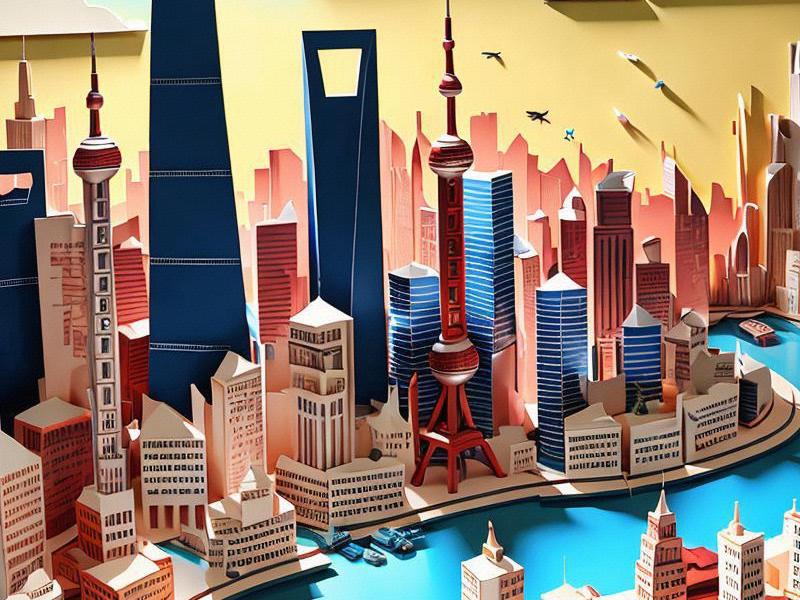Shanghai's Renaissance: A Journey Through the City's Modern Transformation and Cultural Revival
⏱ 2025-05-01 01:00 🔖 上海品茶工作室
📢0℃

Shanghai, often referred to as the "Pearl of the Orient," stands as a testament to China's extraordinary journey of economic reform and urbanization. Over the past few decades, this vibrant metropolis has undergone a profound metamorphosis, emerging as a global financial hub and a cultural mecca that seamlessly blends the old with the new.
The city's transformation is most evident in its skyline, which has been reshaped by a wave of modern architecture. Iconic structures such as the Oriental Pearl Tower, the Shanghai Tower, and the Jin Mao Tower have redefined the urban landscape, symbolizing Shanghai's ambition to rival the world's most prominent cities. These skyscrapers, with their sleek lines and innovative designs, are not just architectural marvels but also serve as a testament to the city's economic prowess.
Yet, amidst the concrete and glass, Shanghai has made a concerted effort to preserve its historical and cultural heritage. The Bund, a historic waterfront area, offers a glimpse into the city's colonial past, with its array of 19th-century buildings now housing luxury hotels, restaurants, and boutiques. Walking along the Bund, one can witness the juxtaposition of old-world charm and modern luxury, a reflection of Shanghai's ability to honor its history while embracing the future.
The city's cultural revival is further exemplified by the establishment of cultural districts such as the former French Concession. This area, with its tree-lined streets, art galleries, and boutique shops, has become a haven for artists, designers, and those seeking a taste of Shanghai's bohemian side. The French Concession's transformation from a colonial enclave to a vibrant cultural hub underscores the city's commitment to preserving its unique identity in the face of rapid urbanization.
上海夜生活论坛
Shanghai's economic achievements are nothing short of remarkable. As one of China's four municipalities directly under the central government, it boasts the highest GDP among all Chinese cities. The city's strategic location at the mouth of the Yangtze River and its status as a major port have made it a key player in global trade. Shanghai's free trade zone, established in 2013, has further solidified its position as a gateway to international markets, attracting foreign investment and fostering innovation.
The city's economic success is not limited to its financial sector. Shanghai is also a leader in industries such as technology, manufacturing, and logistics. The Zhangjiang Hi-Tech Park, often referred to as "China's Silicon Valley," is home to numerous high-tech companies and research institutions, driving the city's innovation and entrepreneurship. This focus on technology and innovation has positioned Shanghai as a key player in China's drive to become a global leader in science and technology.
Shanghai's transformation is not without its challenges. The rapid pace of urbanization has brought about issues such as housing shortages, traffic congestion, and environmental concerns. However, the city has taken proactive measures to address these challenges. Initiatives such as the construction of new subway lines, the promotion of green spaces, and the implementation of strict environmental regulations aim to crteeaa more sustainable and livable city.
419上海龙凤网
One of the most significant projects in this regard is the development of the Huangpu River waterfront. This ambitious project aims to transform the riverfront into a world-class urban space, complete with parks, promenades, and cultural attractions. The waterfront will not only enhance the quality of life for residents but also serve as a symbol of Shanghai's commitment to sustainable urban development.
Shanghai's global influence extends beyond its economic and cultural achievements. The city has played a pivotal role in China's foreign policy, serving as a platform for international diplomacy and cooperation. The annual World Expo, held in Shanghai in 2010, attracted millions of visitors from around the world and showcased the city's ability to host large-scale international events. The Expo's theme, "Better City, Better Life," resonated with the global community, highlighting Shanghai's vision for sustainable urban development.
The city's international profile has also been elevated through its role as a host for major international organizations and events. The Shanghai Cooperation Organization (SCO), a regional security organization, has its headquarters in the city, reflecting Shanghai's importance in fostering regional cooperation and stability. Additionally, Shanghai has hosted numerous high-profile events, including the G20 Summit and the APEC meeting, further cementing its status as a global city.
爱上海419论坛
Shanghai's transformation is a microcosm of China's broader development story. It reflects the country's ability to balance rapid economic growth with cultural preservation and environmental sustainability. The city's journey from a historic port to a global hub is a testament to the resilience and adaptability of its people, as well as the visionary leadership that has guided its development.
As Shanghai continues to evolve, it faces both opportunities and challenges. The city must navigate the complexities of globalization, address the social and environmental impacts of urbanization, and maintain its position as a global leader. However, with its rich history, vibrant culture, and innovative spirit, Shanghai is well-equipped to meet these challenges and continue its journey of transformation.
In conclusion, Shanghai's renaissance is a story of remarkable progress and resilience. It is a city that has embraced change while honoring its past, a place where the old and the new coexist in harmony. As Shanghai looks to the future, it remains a beacon of China's aspirations and a symbol of the possibilities that lie ahead for urban development and cultural revival.
Shanghai 2040: Where Futurism and Heritage Collide in China's Global MegacityShanghai 2040: How China's Global City Is Reinventing Urban LivingThe Phoenix of the East: How Shanghai is Reinventing Global Cultural InfluenceShanghai's Green Transformation: Pioneering Sustainable Urban Development in the 21st Century【摩登密码】从月份牌到元宇宙:上海女性审美百年流变录Shanghai's Vibrant Lifestyle, from Historical Pedigree to a Global Metropolis【特别调查】"共饮一江水:长三角生态绿色一体化发展示范区三年成效报告"【摩登密码】从石库门到元宇宙:上海女性的百年形象革命Shanghai’s Digital Elegance: Where Tradition Meets Tomorrow’s Frontier in BeautyShanghai's Nightlife Evolution: How Luxury Entertainment Clubs Are Redefining Urban Social Culture
海派烟火眉:上海美女的市井诗行与精神注脚《霓虹深处:南京东路百年商业街的进化论》《百乐门到元宇宙:上海娱乐会所进化论》霓虹与檀香:上海高端会所三十年文化流变"四段式模板
7. 历史参考:前两篇分别以"感官革命"和"时空折叠"为切入点,本次需创新视角
8. 时效元素:当前为2025年,可融入AI、元宇宙等现代科技元素
9. 价值导向:展现独立、智慧的当代上海女性形象,规避物化倾向
以下是符合要求的深度特稿:《梧桐树下的方程式:95后女科学家与旗袍实验室的双城记》《石库门密码:上海里弄建筑的时空折叠》《石库门里的时光标本》《梧桐树下的城市镜像》梧桐区镜像:上海女性的空间叙事与身份建构
空间修辞,身体政治,时尚语法,记忆拓扑,社群算法

